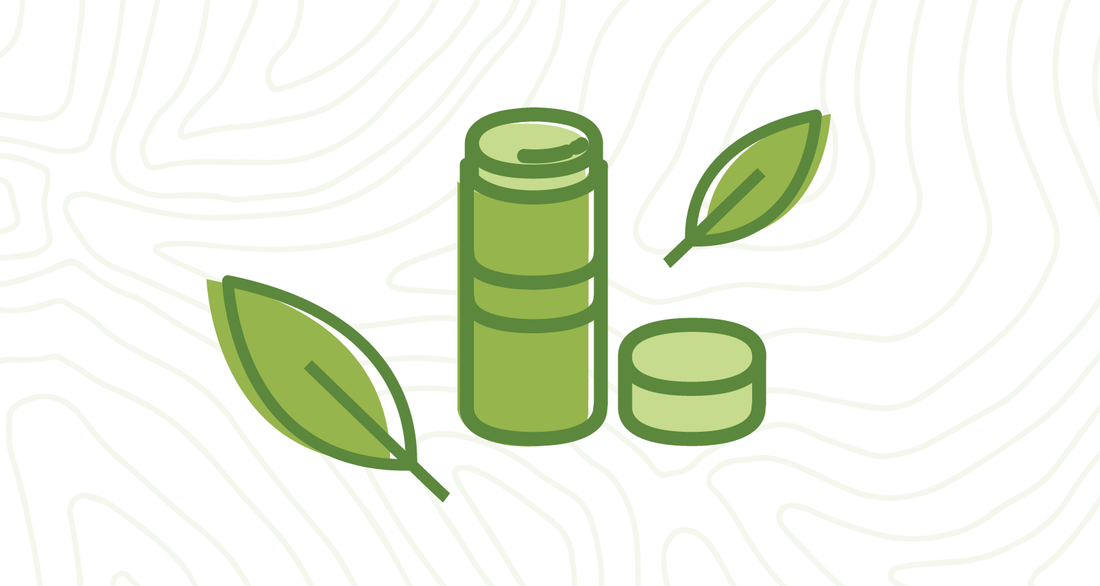Excerpts from “My Home Pharmacy: How Foods and Herbs Can Be Your Medicine” by Tracy Gibbs, PhD
Although many respond to the term “herbal medicine” with a not-so-subtle eye roll, alternative medicine can be an effective and trustworthy source of relief if you prioritize fueling your body with natural remedies. Herbal medicine is basically any natural plant material that is used for the benefit or treatment of an ailment. What many people don’t realize is that many “herbal remedies” are foods that you and I consume every day. If you’re interested in at-home, alternative medicine, check out the information that Tracy Gibbs has compiled below.
The five modalities for herbal treatments that are the most practical and the least time-consuming are as follows:
- Teas
- Tinctures
- Oils
- Salves and Lip Balms
- Poultices
Teas
The remedies I (Tracy Gibbs) use most often are medicinal teas. Teas are simple remedies that can alleviate or treat most common illnesses. Teas are simple, effective and generally safe to use every day. However, learning the proper type of tea to make different types of medicine is very important in order to get the right potency or the right treatment for the ailment.
There are two common means of making medicinal teas: infusions and decoctions.
Infusions are liquid solutions of plant extracts prepared by pouring boiling liquid over the plant material. Infusions are the most common herbal remedy. Many people use infusions every day without realizing it—tea made with tea bags is an infusion, as is instant coffee. It is not necessary to use water as the liquid when making an infusion. I commonly use apple juice in order to get my children to drink the herbal remedies I make for them.
To make an infusion, simply place the plant material listed in the recipe in a cup or in a strainer over a cup and pour the hot liquid over it. Another way to make an infusion is to add the herb into a pot of hot (not boiling) water and let it sit for up to 10 minutes. Strain the plant material from the pot and drink the liquid. Infusions are great for materials such as leaves, flowers, fresh fruit and other matter in which nutrients can be easily extracted with heat and water.
Jasmine tea, chamomile tea and peppermint tea are common infusions and have great medicinal benefits. Using infusions multiple times a day when no ailment is present, however, is like taking medicine unnecessarily. Over long periods of time, it may be disadvantageous. For example, goldenseal, which contains the alkaloids berberine and hydrastine, should not be taken for more than three weeks in a row because it may unnecessarily stimulate the immune system.
Decoctions are types of herbal teas made from plant material that is woody, rough and tough, such as seeds, stems, bark, dried fruit and roots. The nutrients in these types of materials cannot be extracted effectively through infusion methods but require extended periods of heating. A decoction is prepared by boiling the material in water for 20–30 minutes and then simmering for another 10 minutes or longer. The lid is typically kept on the pot the entire time. This allows tougher herbs to soften so the water can extract the nutrients contained within. Because decoctions take more time, they are not used as commonly as infusions. But decoctions are just as effective as infusions, if not more so, because seeds, roots, stems and bark contain many beneficial phytochemicals with medicinal properties.
For most decoctions, a standard ratio of material to water is 1:20 by volume (one part material to 20 parts water). This would mean that if you use 1/4 cup of material, you would need to add five cups of water. Follow the recipe as closely as possible the first few times you make it, but just as a seasoned chef may make small changes here and there to a dish, once you are familiar with the recipe you may add or take away according to your own intuition and needs.
Tinctures
Tinctures have been produced and used since the beginning of recorded time. They are a great way of turning plants and foods into medicine. Making them requires a bit of time, but there are many reasons to consider taking the time to make a tincture. Among them are portability, excellent shelf life, convenience and efficacy. Having a few homemade tinctures in your medicine cabinet could save a lot of money and time in fewer trips to an allopathic doctor.
Perhaps the best way to describe a tincture is to call it a “pickled” plant. Tinctures are concentrated extracts of medicinal plants that use alcohol, vinegar or glycerin as the means of extraction. Alcohol is the best means of extraction in most cases. However, those who might be sensitive to using alcohol or who will not use it for religious reasons will get some value by using either vinegar or glycerin. During the process of pickling, the alcohol, vinegar or glycerin leaches nutrients from the plant. After days, weeks or even months of soaking the plant in the solution, the liquid extract that results is known as a tincture. Many modern cough remedies, such as Robitussin® and NyQuil®, reportedly originated from tinctures (thus the high alcohol content of these remedies).
Method for making a tincture:
Because of the water contained in plant material, to make an effective tincture you will need to use at least 95 percent (190-proof) alcohol (Everclear®, vodka or brandy is sufficient). If 190-proof alcohols are not available, let the plant material wilt or dry thoroughly before using your alternative alcohol source. Use one part material to two parts liquid, by weight (i.e., one ounce herb to two ounces alcohol).
- Chop the plant material into dime-sized pieces.
- Place plant material in a jar with alcohol.
- Seal the jar with a tight-fitting lid.
- Let it sit for 10–14 days.
- After 10 days or longer, strain the liquid into 1 or 2 ounce amber colored glass containers (a cheesecloth or coffee filter works well for straining). Amber or darker bottles are best since some active phytochemicals are sensitive to lights and may be rendered inactive if exposed to light. Squeeze the filter (with the material in it) well to get all of the juice out of the material.
- Store in a cool, dark place (such as a medicine cabinet) for use as needed.
Tinctures are used very differently from teas. Take small drops throughout the day for illnesses. Because tinctures contain alcohol, vinegar or glycerin, do not overuse them. Keep them out of the reach of children.
Oils
Before we begin to discuss oils, you need to understand the typical terms used to define various types of oils. There is a huge difference between essential oils and herbal oils.
Essential oils are distilled volatile oils of plants. Most essential oils on the market cannot be ingested because of impurities in the distillation process or because of oil-based chemicals such as herbicides and pesticides used in the growing operation of the raw plant material. However, a 100 percent pure essential oil with no impurities may be safely ingested and may be quite effective as a medicinal modality. Since some essential oils are toxic, use caution when ingesting them. Ingest only therapeutic grade oils and follow all directions on product packaging.
Making an essential oil requires special equipment and typically cannot be done at home so I will not focus on it in this book. However, many pure essential oils can be purchased readily at your local health food store and online. Of the many companies I have reviewed, there is only one that tests its oils for any impurities.
Herbal oils are easily made at home and are an important part of creating your own “home pharmacy.” Herbal oils can be used as a topical oil or can serve as your base for the production of herbal salves and various massage oils. These oils are great for ear infections, blemishes, skin irritation, stiff muscles and many other simple ailments. If you want to make a salve, start by making an herbal oil. In order to make an herbal oil, you will need a fixed oil.
Fixed oils are solvents used to draw out active chemicals in plants. Olive oil is one of the most common fixed solvents. Grapeseed oil, almond oil and apricot kernel oil are other widely used fixed oils. First-press extra virgin olive oil is my fixed oil or solvent of choice, and if I cannot find any, I use grapeseed oil. By combining fixed oils with herbs you can make great massage oils, and then from there, use them to make lotions, lip balms and many other beneficial salves.
Method for making herbal oils:
Use only dried herbs for making an herbal oil. As a general rule, use three ounces of the herb for one pint of fixed oil. There is a lot of leeway with herbal oils, so feel free to experiment with these ratios.
- Place the herbs in a jar and completely fill the jar with the fixed oil, covering the herbs with at least two inches of oil. Do not allow space for air at the top—purchase jars of the proper size for your batch. Screw the lid on tightly.
- Leave in a warm, sunny spot such as a windowsill for at least two weeks. The oil will take on the color and taste of whatever herb used.
Salves and Lip Balms
Herbal salves have been used for thousands of years because they are safe and effective. They are an excellent choice for pain relief or for any type of insect bite, burn, itching or skin irritation.
Most people use commercial herbal salves and oils every day, but there are many other effective medicinal oils and salves that are less known. This is largely due to the current label laws, which restrict information on the label. The structure/function claim laws are a good example. Under the DSHEA (Dietary Supplement Health and Education Act), a food or food supplement cannot make any claim outside of the normal function or structure of the body. In other words, an herbal immunity boosting formula cannot say it helps boost the immune system.
It must say it “supports the normal function of the immune system.” Or a joint pain herbal formula cannot claim it alleviates pain. It must say something like “supports the normal function of healthy joints.”
Because salves are so handy (and economical), try taking a Saturday afternoon with your kids to make a year’s supply.
Method for making herbal salves:
To make an herbal salve from your herb of choice:
- Using the prepared herbal oil (see page 40), strain the herb from the oil using cheesecloth or a fine strainer.
- Place the herbal oil in the upper pan of a double boiler.
- Add 1/4 cup of beeswax for every cup of the oil. (Do not use paraffin wax.)
- Melt the herbal oil and beeswax together and check the consistency by dipping the end of a teaspoon into the mixture and allowing the small portion on the spoon to cool. It should feel like a lip salve when cool. If it is too soft, add more beeswax. If it is too firm, add more oil.
- Prepare containers to pour the salve into while it is still hot and in liquid form. Be sure to label them, listing the ingredients and the date produced. Small one-ounce containers work best for burn creams and lip salves used occasionally, but if you are making a salve for arthritic or joint pain, use a four-ounce or an eight-ounce jar depending on how frequently you will use the salve.
- Store in a cool, dark place such as a cupboard.
Method for making lip balm:
- Add one tablespoon of each of the following into a double boiler:
- Avocado oil
- Coconut oil
- Sweet almond oil
- Mango butter
- Shea butter
- Beeswax
(You may substitute any oil or butter you prefer. Other options include olive oil, sesame oil, hemp seed butter, cocoa butter, etc. Oils and butters vary in consistency, so experiment to get the texture and firmness you desire.) Optional: Add a 1/2 tablespoon of lanolin for a waterproof effect.
- Melt oils and butters together.
- After the oils and butters are melted, add one milliliter or 16 drops of an essential oil of your choice.
- Mix well and pour into containers.
The feeling of making your own salve or lip balm is something everyone should experience. It is easy and a great activity for kids to participate in as well. The pride they will feel as they use their handmade lip balm at school and show it to their friends will not be easily forgotten. Making salves and other skin care items can be a fun family experience.
Poultices
A poultice is a warm, moist mass of powdered or cut herbs that is applied directly to a wound or injury, allowing the medicinal properties of the herbs to be absorbed into the body through the skin. A poultice is always used externally. Poultices are beneficial for burns, cuts, temporary swelling and inflammation, rashes, insect and snake bites, fungal infections, skin blemishes and many other surface conditions.
Poultices are widely used in allopathic medicine today. Have you ever used a nicotine patch, a menthol pad, a hormone patch or a birth control patch? A medicinal patch was originally derived from a poultice. The skin, as an organ, is able to absorb into the bloodstream many beneficial nutrients that can assist in the healing of injuries or ailments. Only 50 years ago, allopathic medicine taught that the skin could not breathe or absorb. Science finally caught up with herbal medicine, and poultices (or patches) are a trend in pharmaceutical drug delivery systems.
Method for making an herbal poultice:
Option 1
- Make a strong decoction of herbs of your choice.
- Let the decoction cool to lukewarm.
- Soak a cotton cloth in the decoction.
- Apply the cloth to the affected area.
Option 2
- Crush or grind fresh herbs, a small amount of water, olive oil or 190-proof alcohol to make a thick paste.
- Apply the paste to the wound or injury.
- Cover the pasted wound with a warm cloth or gauze and lightly tape or tie it into place.
Use for minor conditions only. For serious health concerns, visit a healthcare practitioner immediately.




